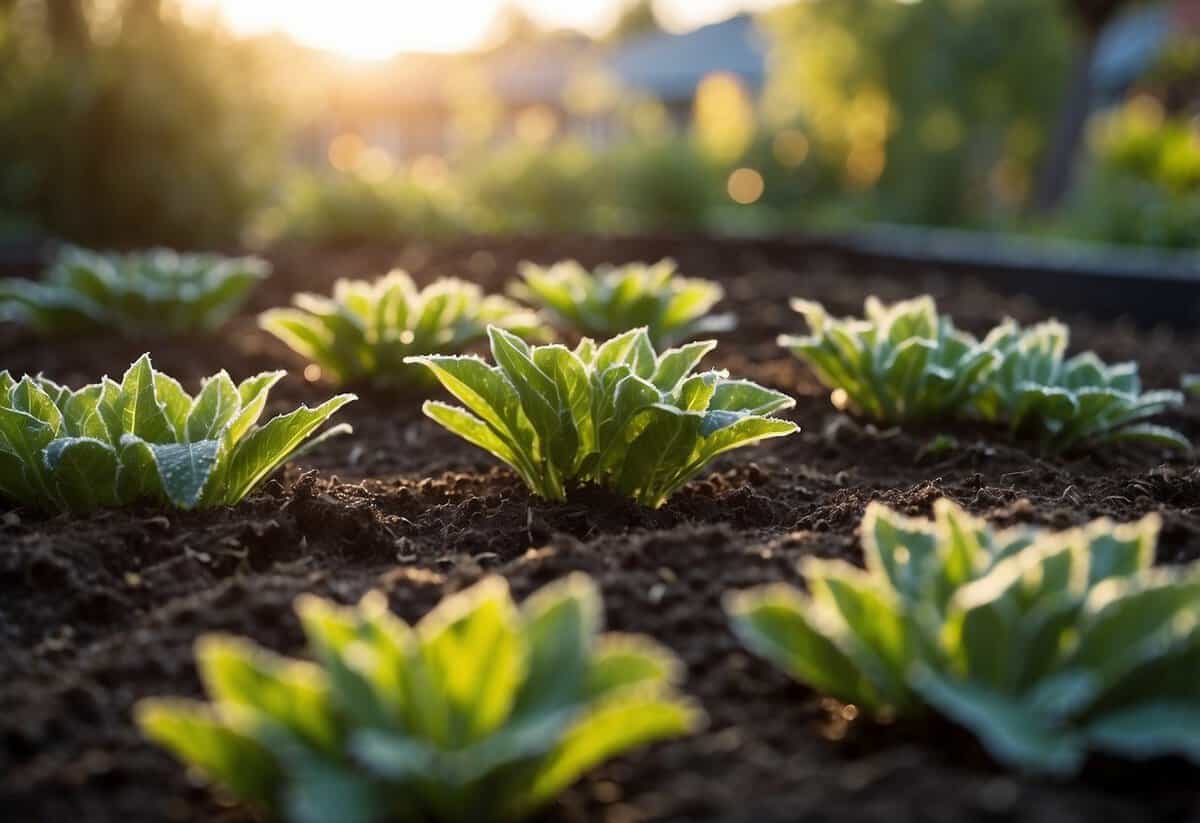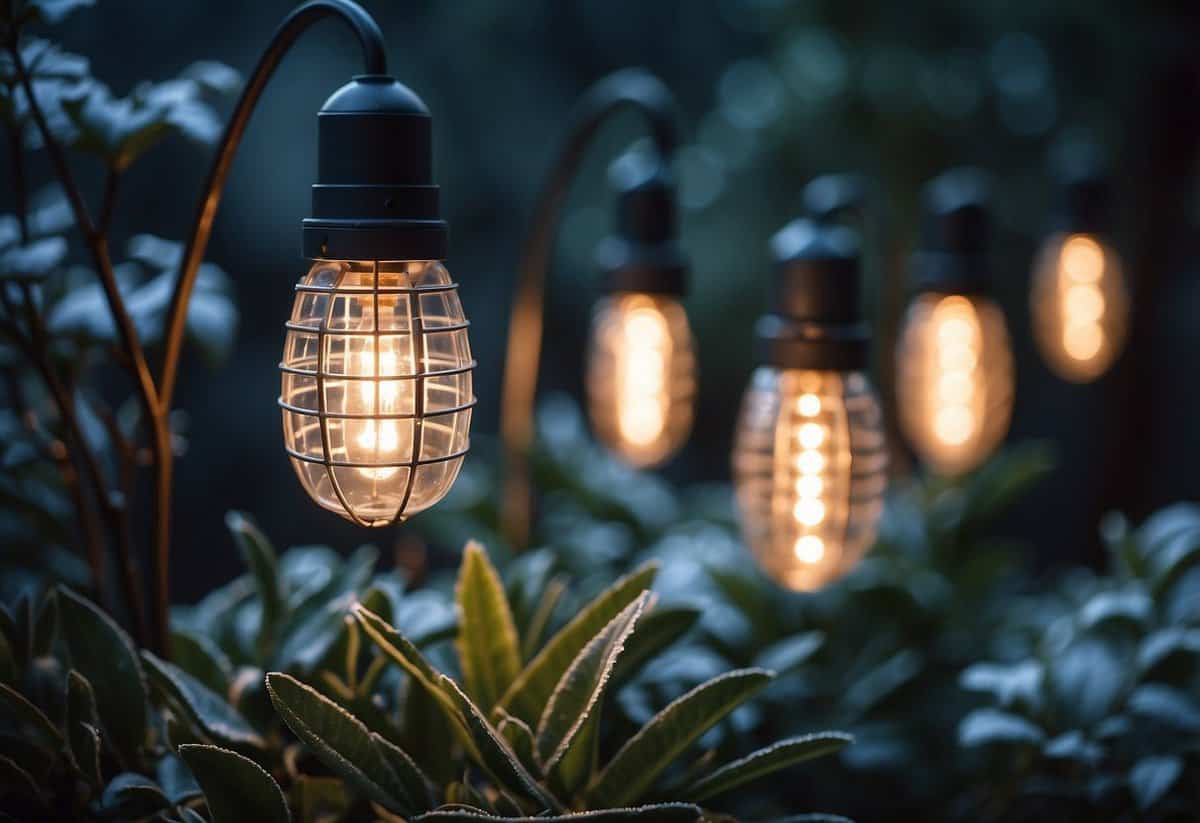Tips to Protect Garden from Frost: Keep Your Plants Safe
Gardeners know that frost can be a major threat to plants, especially in early spring and late fall. If you’re looking for ways to keep your garden safe, you’re in the right place. This article will provide you with practical tips to protect your garden from frost, ensuring your plants remain healthy and vibrant.

Understanding how to guard against frost is key to a flourishing garden. Whether you have a small backyard plot or a larger garden, taking a few preventive measures can make a significant difference. By following some simple strategies, you can minimize frost damage and enjoy a thriving garden all year round.
1) Use Frost Blankets

Frost blankets are a great way to protect your garden. They can be laid directly on plants or supported by hoops to create a mini greenhouse effect.
You can secure them with landscape fabric pins, rocks, or sandbags. This prevents the blankets from blowing away in the wind.
Frost blankets are light-weight and don’t crush plants. They help keep the warmth in and the cold out. They can also be reused season after season. You can learn more from Bootstrap Farmer and Epic Gardening.
2) Install Cold Frames

Cold frames are great for protecting your plants from frost.
You can build a cold frame by using simple materials like wood and transparent covers. Make sure it’s at least 12 inches high in the back and 8 inches in the front for good drainage.
To help with warmth, you can paint the interior black. This way, it will retain more heat to keep your plants cozy.
For more detailed instructions on building cold frames, check out this how-to guide.
3) Water your plants in the morning

Watering your plants in the morning is a great way to protect them from frost. When you water the ground in the morning, it heats up during the day and helps keep the roots warm at night.
Be sure to avoid getting water on the leaves, as wet leaves can freeze more easily and cause damage. This tip can help your plants stay safe when frost is expected. For more tips, you can read about it here.
4) Apply Mulch

Using mulch is a great way to protect your garden from frost. A thick layer of mulch around the base of plants helps insulate the soil.
This insulation keeps the ground warmer, which can protect the roots from freezing. Types of mulch, like straw or shredded leaves, work well for this purpose.
Applying mulch generously is key. Don’t skimp on it. A deep covering can make a big difference during cold snaps. This practice also helps retain soil moisture and prevent weeds. For more details, check out how to protect plants with mulch.
5) Use Cloches

Cloches are an easy way to protect your plants from frost. They act like small greenhouses, keeping the temperature around your plants warmer.
A simple cloche can be made from materials like glass, plastic, or even upcycled items. For instance, you can cut the bottom off a plastic jug and use it to cover your plants.
Glass bottles and chicken wire also work well for cloches. They help shield your plants from cold and reduce frost damage.
To learn more, check out creative garden cloche ideas.
6) Bring potted plants indoors

When frost is on the way, it’s smart to bring your potted plants indoors.
Cold nights can damage tender plants, so moving them inside can protect them. Place them in a spot with good light, like near a window.
If your plants are too large to move, try putting them in a sheltered area, like a garage or porch. This can still offer some protection from the cold. Keeping your potted plants indoors during frosty nights is an easy way to keep them healthy.
7) Plant Frost-Resistant Varieties

Choosing frost-resistant plants can help you minimize damage during cold weather. Some vegetables and perennials are bred to withstand lower temperatures better than others.
Look for plants like kale, spinach, and certain types of lettuce. These can survive light frosts without significant harm.
Select hardy perennials such as sedum and hellebore. They’ll thrive even when temperatures drop.
8) Cover plants with plastic

Using plastic sheets or tarps is a simple way to protect your plants from frost.
Drape the plastic over the plants and secure the edges with rocks or stakes. This traps the heat and prevents frost from settling on the plants.
If you use clear plastic, it can act like a mini greenhouse and keep plants warmer. For an example, check out the article on Homes & Gardens that describes this method.
9) Create Windbreaks

Creating windbreaks can help protect your garden from frost. Windbreaks like trees, bushes, or grasses reduce wind speed, which helps keep your plants safe.
Plant a row of trees or a hedge to create a natural barrier. This not only protects your plants but also adds beauty to your garden.
You can also use fences or walls as windbreaks. They provide sturdy protection against cold, harsh winds. Learn more about using windbreaks to improve your garden’s safety and appearance.
10) Heat Lamps for Sensitive Plants

Heat lamps can be a great way to keep your sensitive plants warm during frosty nights. These lamps provide direct warmth that helps prevent frost damage.
You can use heat lamps in greenhouses or outdoors, just make sure they are waterproof if used outside. They are especially useful for potted plants and tender garden plants.
Position the lamps close to the plants, but be careful not to let them touch the leaves to avoid burning them. This method is particularly effective for young or delicate plants that need extra care.
Understanding Frost and Its Impact on Gardens

Frost can be a serious threat to your garden, causing significant damage to plants. Understanding what frost is and how it affects plants is crucial for protecting your garden.
What Is Frost?
Frost happens when the temperature drops below the freezing point of water (32°F or 0°C). When this occurs, water vapor in the air turns into ice crystals on surfaces like leaves, stems, and soil.
There are two main types of frost: light frost and hard frost. Light frost occurs with temperatures just below freezing and usually forms a thin layer of ice. Hard frost, on the other hand, happens when temperatures drop significantly below freezing, leading to a thicker layer of ice that can penetrate deeper into plant tissues.
How Frost Affects Plants
Frost affects plants by causing ice crystals to form inside their cells. This can damage cell walls, leading to wilted, blackened, or mushy leaves. The most vulnerable parts of plants are the tender new growth, buds, and flowers.
When the water inside the plant cells freezes, it expands and can burst the cells. This damage disrupts the plant’s ability to transport water and nutrients, leading to stunted growth or even death. Frost damage is more severe in plants that are not adapted to cold climates, like tropical and subtropical species.
To protect your garden, it’s important to take preventive measures like using row covers, applying mulch, or even bringing potted plants indoors on cold nights.
Methods to Insulate and Protect Plants

Keeping your plants safe from frost is crucial to maintaining a healthy garden. Here, we discuss how to insulate soil with mulch and cover plants using fabric or plastic.
Using Mulch to Keep Soil Warm
Mulch acts like a warm blanket for your soil, helping to trap heat and moisture. When you spread a thick layer of mulch, it creates a barrier that helps protect plant roots from freezing temperatures.
Materials like shredded bark, straw, or compost work well. Aim for a layer that’s about two to three inches thick. This helps retain warmth and prevents the ground from freezing.
Apply mulch around the base of plants, but leave a little space around the stem to prevent rot. Using mulch is especially helpful during cold nights or when frost is predicted.
Covering Plants with Fabric or Plastic
Covering your plants is another effective way to protect them from frost. You can use materials like fabric, old sheets, or even plastic. The key is to cover plants before the frost hits to trap heat close to the soil and plants.
For smaller plants, you might use cloches, which are dome-shaped covers that act like mini-greenhouses. Cloches made of clear plastic work well as they allow light in while keeping frost out.
For larger areas, you can create a frame using slender metal rods, such as wire coat hangers, and drape plastic or fabric over the top. Secure it in place to prevent it from blowing away. Covering plants helps keep them insulated and protects against sudden temperature drops.
These methods ensure your garden stays vibrant and healthy even during colder months.
Choosing Frost-Resistant Plants

To safeguard your garden during colder months, selecting frost-resistant plants is crucial. Some flowers and vegetables are naturally more resilient to frost and thrive even in low temperatures.
Cold-Hardy Flowers
Pansies are popular for their vibrant colors and frost tolerance. They can bloom through light snow, brightening gardens in the cold.
Violas are similar to pansies and are also quite sturdy. They can withstand frosty nights and continue to blossom.
Snapdragons can survive frost and sometimes even re-bloom in the warmer months. They add height and color to your garden.
Consider ornamental cabbages and kales for their beautiful foliage. These plants thrive in cold weather and add unique texture and color to your garden beds.
Vegetables That Can Withstand Frost
Kale is incredibly cold-tolerant and can even become sweeter after a frost. It’s an excellent choice for frosty climates and continues producing through winter.
Broccoli can handle frost well. Planting this vegetable ensures you have a nutritious, hardy crop during colder months.
Carrots are root vegetables that thrive in cooler temperatures. Frost can actually improve their flavor, making them sweeter.
Brussels sprouts are known for their frost resistance. They grow best in cool weather and can remain in the garden after the first frost for continued harvest.
To keep your garden lush in cooler months, choose these hardy flowers and vegetables. Their resilience to cold ensures vibrant blooms and plentiful harvests even when temperatures drop.







